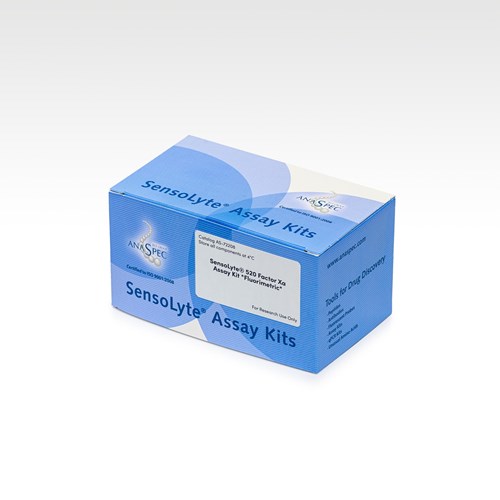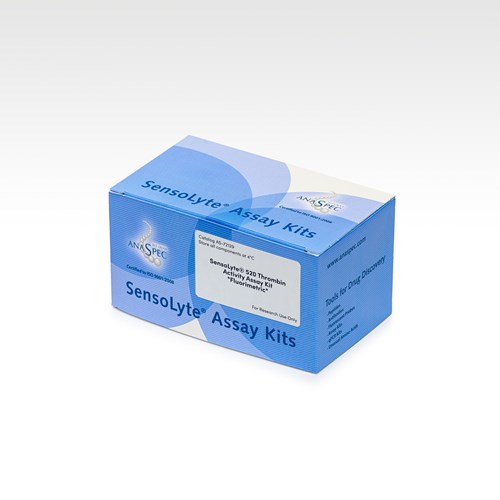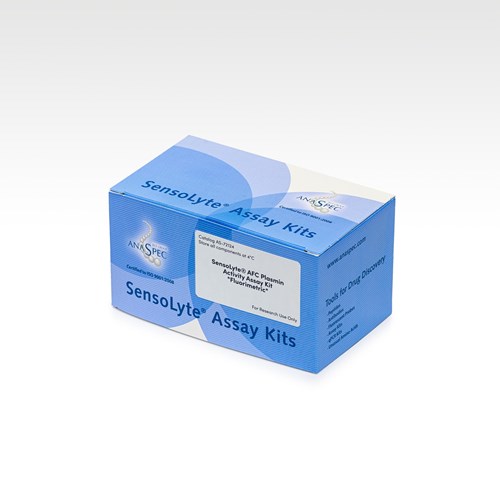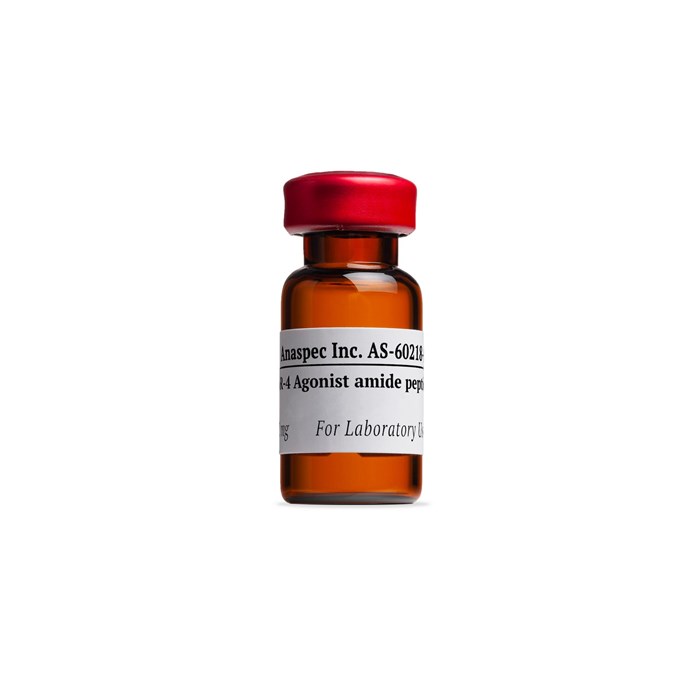Protease-Activated Receptor-4, PAR-4 Agonist, amide
- Cat.Number : AS-60218-1
- Manufacturer Ref. :
-
Availability :
In production
This PAR-4 agonist peptide stimulates thromboxane production by human platelets with the maximal response to this agonist being approximately half of that observed after maximal thrombin stimulation.
Specifications
| Chemistry | |
| Sequence one letter code |
|
|---|---|
| Sequence three letter code |
|
| CAS registry number |
|
| Molecular Formula |
|
| Molecular Mass/ Weight |
|
| Modification | |
| Conjugation |
|
| Quantity & Purity | |
| Purity |
|
| Storage & stability | |
| Form |
|
| Storage Conditions |
|
| Activity | |
| Biomarker Target | |
| Research Area | |
| Sub-category Research Area | |
| Usage |
|
| Source | |
| Source / Species |
|
| Codes | |
| Code Nacres |
|
Downloads
You may also be interested in the following product(s)


SensoLyte® 520 Thrombin Activity Assay Kit Fluorimetric - 1 kit

SensoLyte® AFC Plasmin Activity Assay Kit Fluorimetric - 1 kit
Citations
CIB1 deficiency results in impaired thrombosis: the potential role of CIB1 in outside-in signaling through integrin alpha IIb beta 3.
J Thrombosis Haemostasis . 2009 Aug 19 ; 7(11) 1906 | DOI : 10.1111/j.1538-7836.2009.03581.x
- MU. Naik
- et al
Platelets from mice lacking the aryl hydrocarbon receptor exhibit defective collagen-dependent signaling
J Thrombosis Haemostasis . 2014 Jan 01 ; 12(3) 383 | DOI : 10.1111/jth.12490
- S. Lindsey
- et al
JAM-A protects from thrombosis by suppressing integrin αIIbβ3-dependent outside-in signaling in platelets
Blood . 2012 Jan 23 ; 119(14) 3352 | DOI : 10.1182/blood-2011-12-397398
- MU. Naik
- et al
Ticagrelor effectively and reversibly blocks murine platelet P2Y12-mediated thrombosis and demonstrates a requirement for sustained P2Y12 inhibition to prevent subsequent neointima
Am Heart Assoc . 2010 Nov 11 ; 30(12) 2385 | DOI : 10.1161/ATVBAHA.110.210732
- SB. Patil
- et al
Bile salt–dependent lipase interacts with platelet CXCR4 and modulates thrombus formation in mice and humans
J Clinical Invest . 2007 Dec 01 ; 117(12) 3708 | DOI : 10.1172/JCI32655
- L. Panicot-Dubois
- et al
P2X1 stimulation promotes thrombin receptor-mediated platelet aggregation
J Thrombosis Haemostasis . 2006 Apr 01 ; 4(4) 882 | DOI : 10.1111/j.1538-7836.2006.01849.x
- JA. Erhard
- et al
Characterization of the in vivo antiplatelet activity of the antihypertensive agent losartan
J Cardiovasc Pharmacol Ther . 2011 Nov 28 ; 17(3) 308 | DOI : 10.1177/1074248411425491
- JP. Murad
- et al
Protease-activated receptor-2 activation induces acute lung inflammation by neuropeptide-dependent mechanisms 1
J Immunol . 2005 Aug 15 ; 175(4) 2598 | DOI : 10.4049/jimmunol.175.4.2598
- X. Su
- et al
Protease activated receptor-1, but not -2, -3 and -4, is the player in the pathogenesis of atrial fibrosis; The experiment by neonatal rat atrial fibroblasts.
Int J Cardiol Heart Vessel. . 2013 Nov 13 ; 2 21 | DOI : 10.1016/j.ijchv.2013.11.005
- I. Keiichi
- et al
Thrombin- and Factor Xa–induced DNA synthesis is mediated by transactivation of fibroblast growth factor receptor-1 in human vascular smooth muscle cells.
Circ. Res . 2003 Dec 11 ; 94(3) 340 | DOI : 10.1161/01.RES.0000111805.09592.D8
- BH. Rauch
- et al
Thrombin and factor Xa-induced DNA synthesis is mediated by transactivation of fibroblast growth factor receptor-1 in human vascular smooth muscle cells
Circ Res. . 2003 Dec 11 ; 94(3) 340 | DOI : 10.1161/01.RES.0000111805.09592.D8
- BH. Rauch
- et al
Protease-activated receptors 1 and 4 mediate thrombin signaling in endothelial cells
Blood . 2003 Jul 17 ; 102(9) 3224 | DOI : 10.1182/blood-2003-04-1130
- H. Kataoka
- et al
